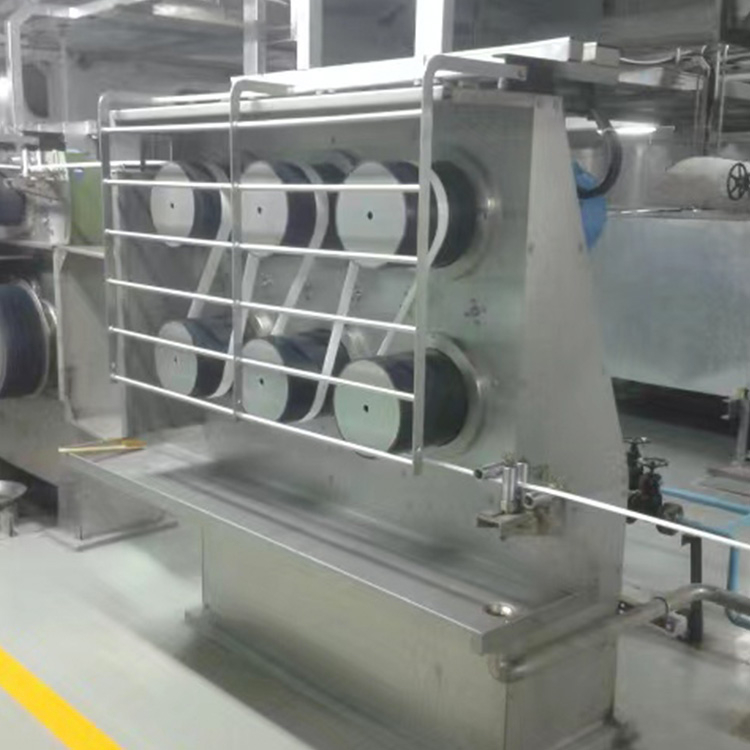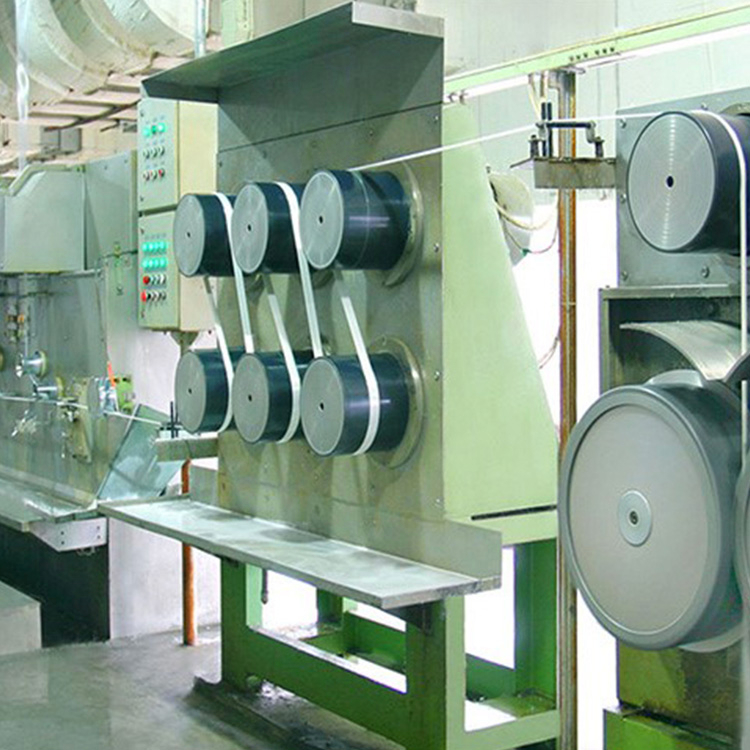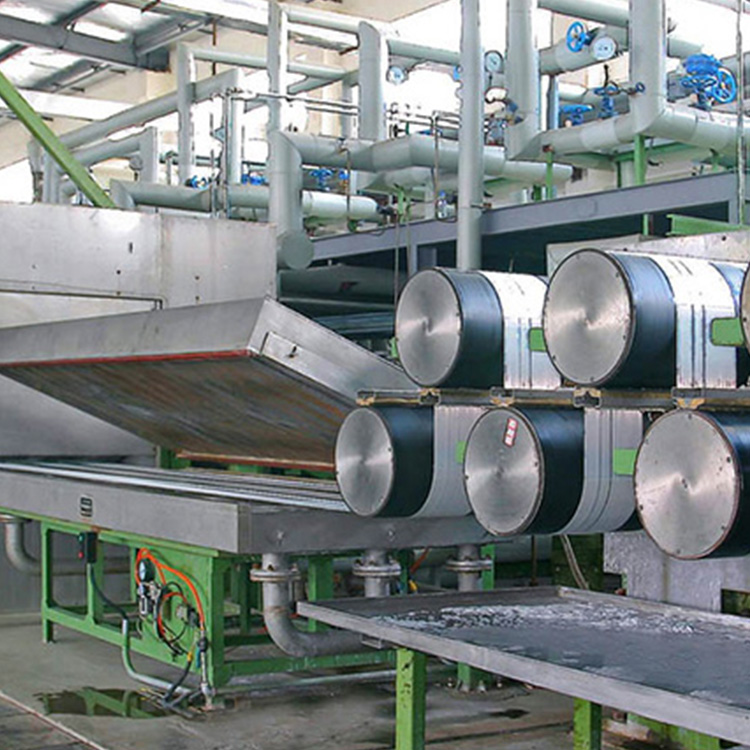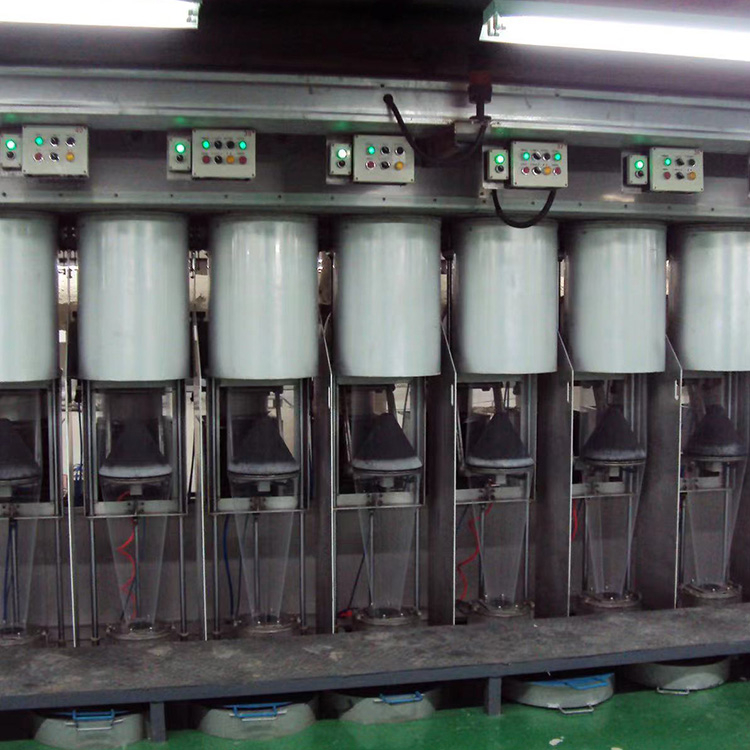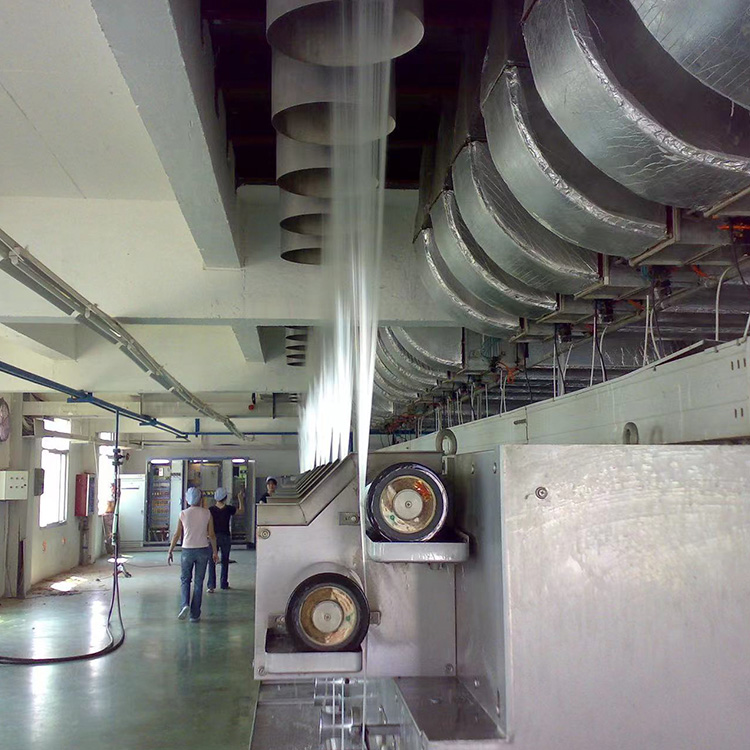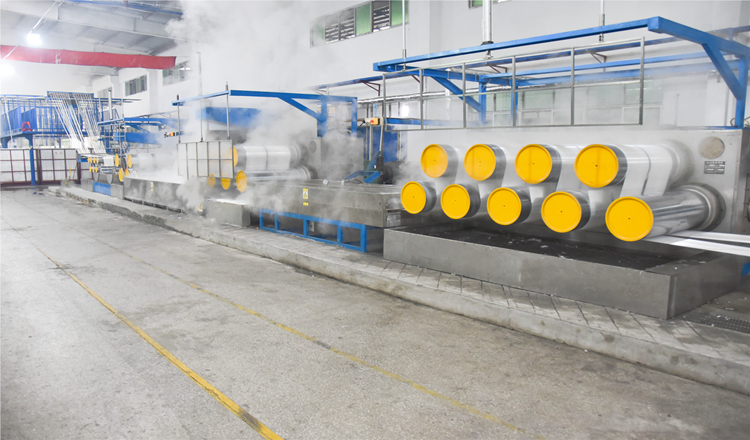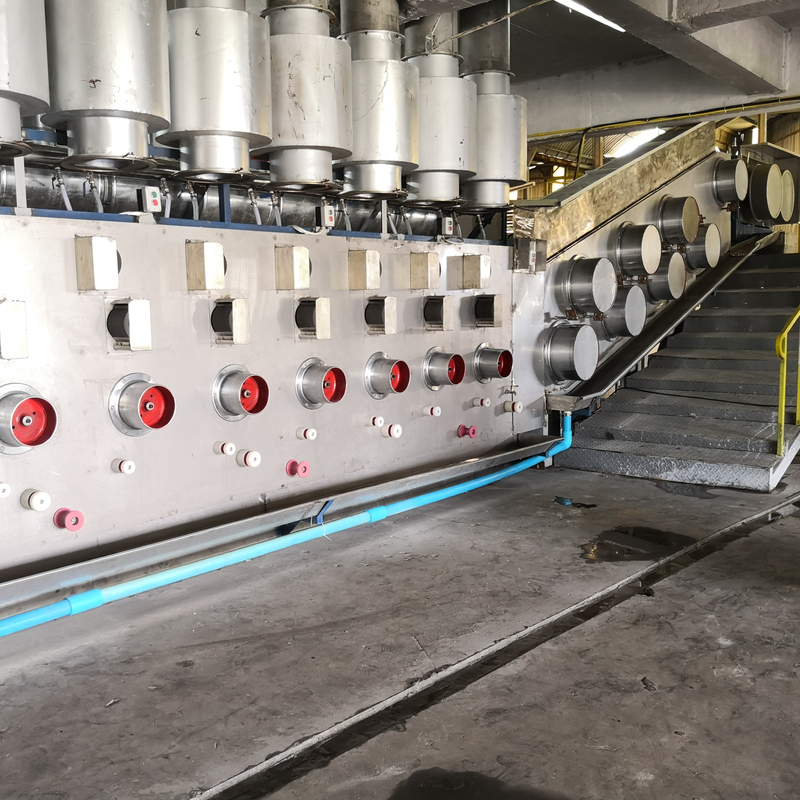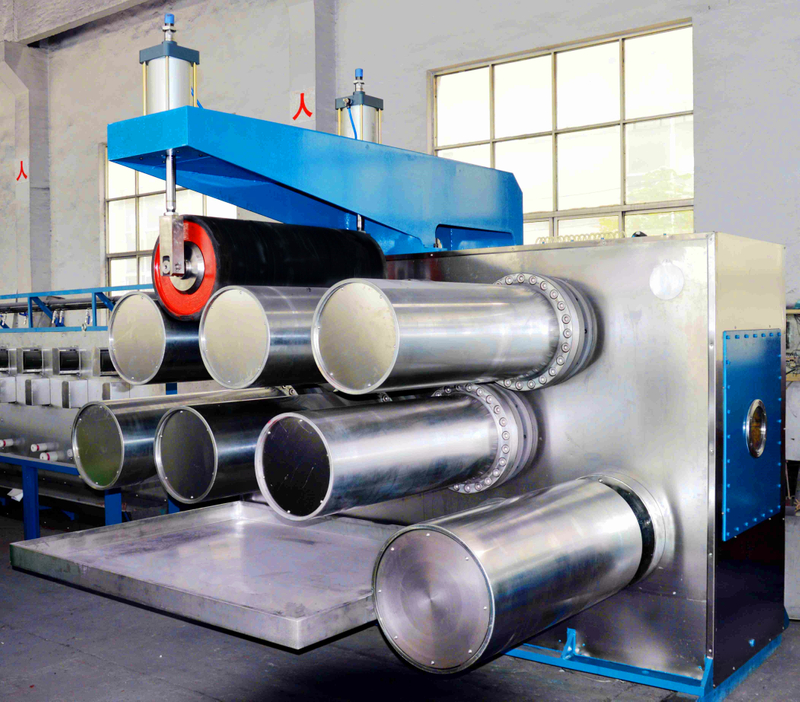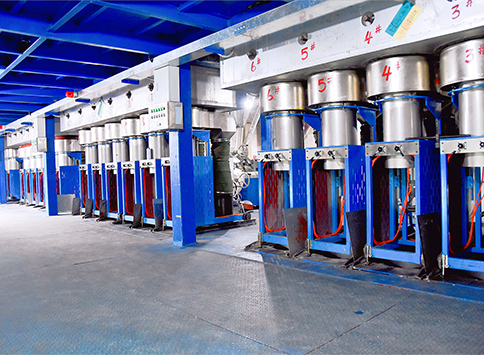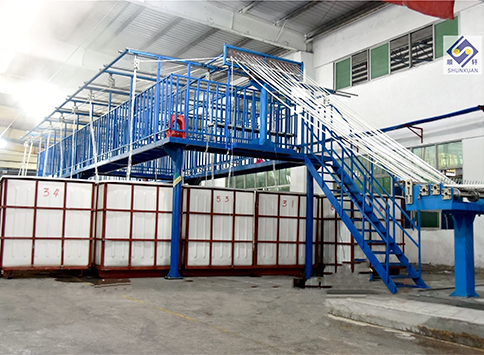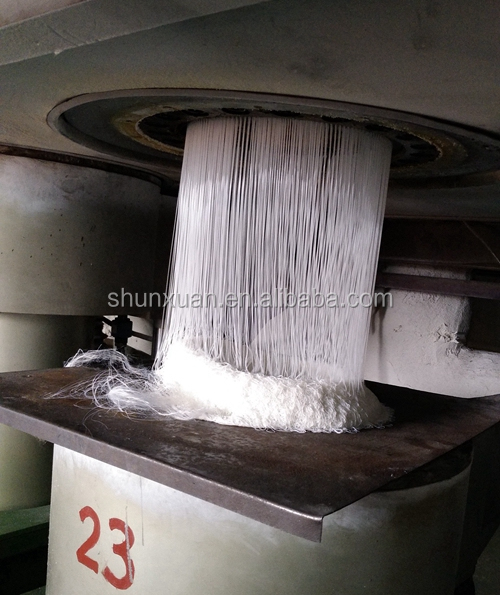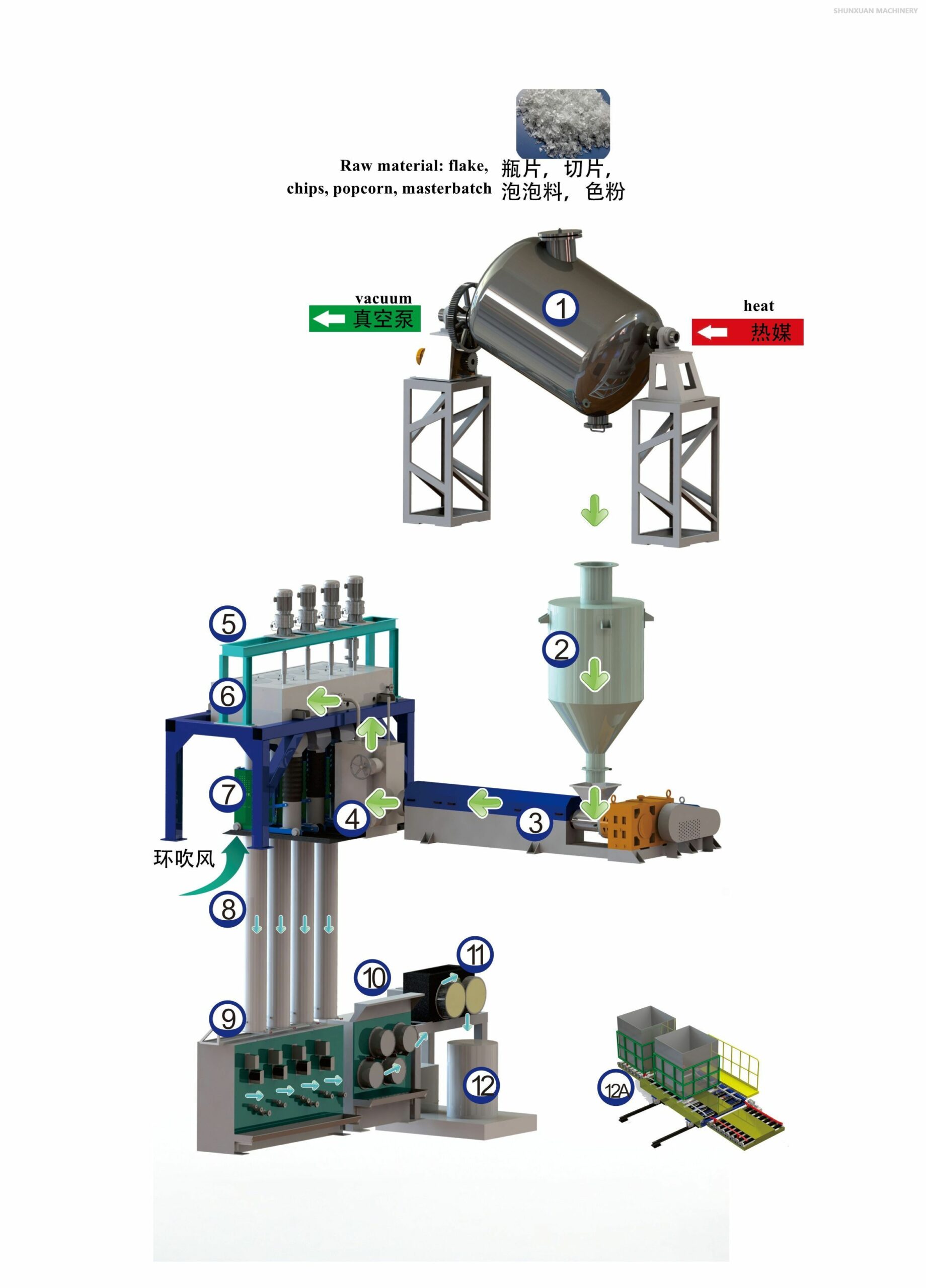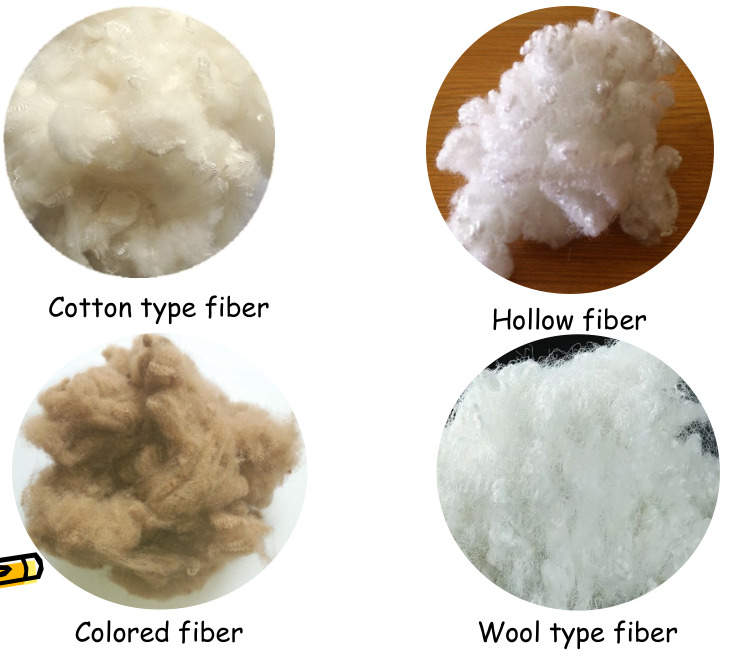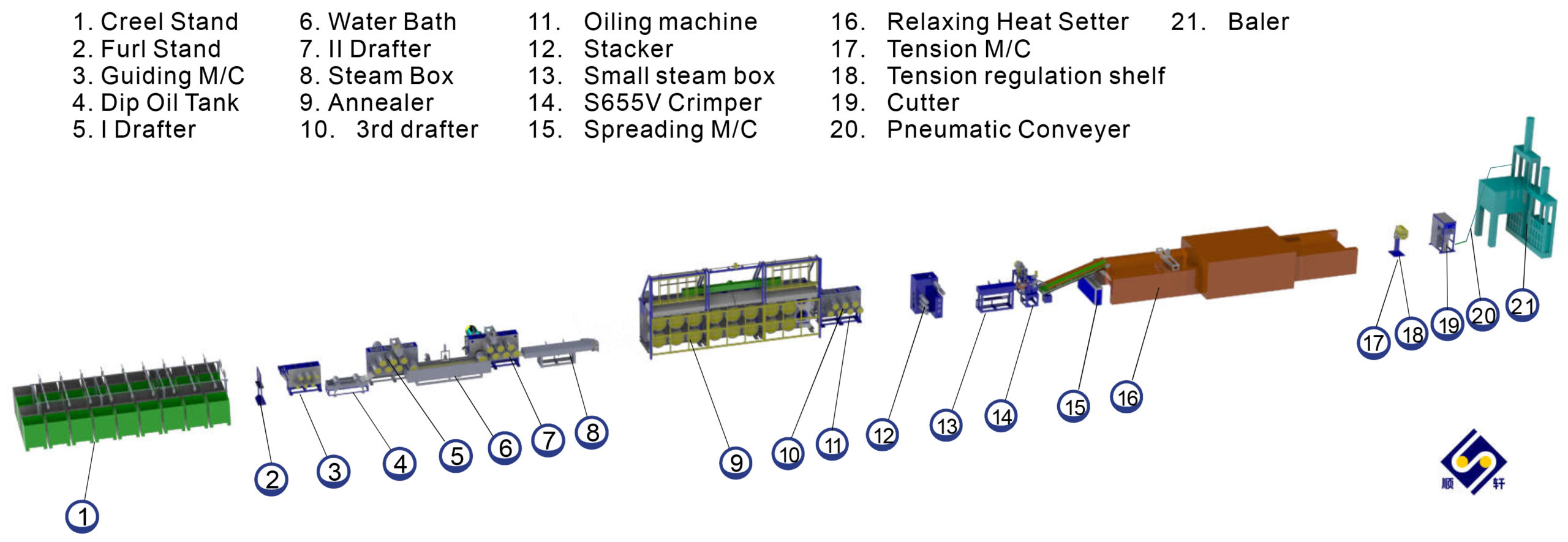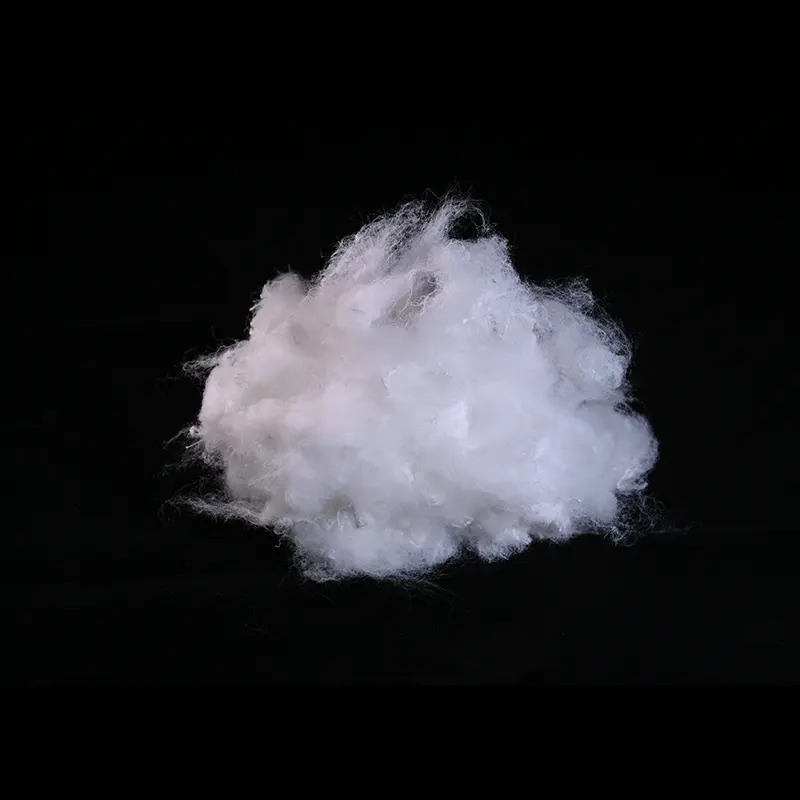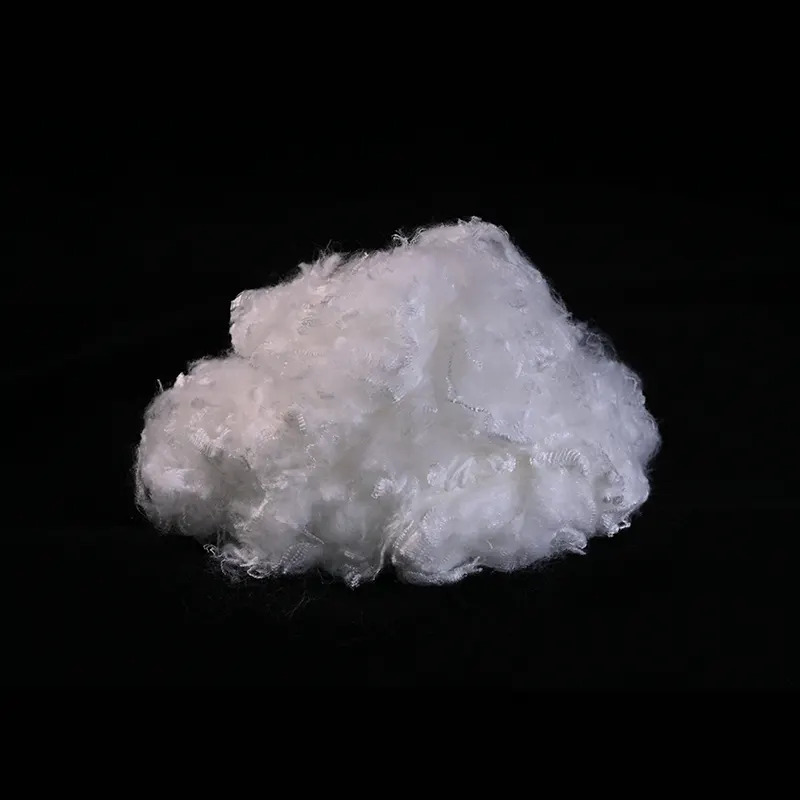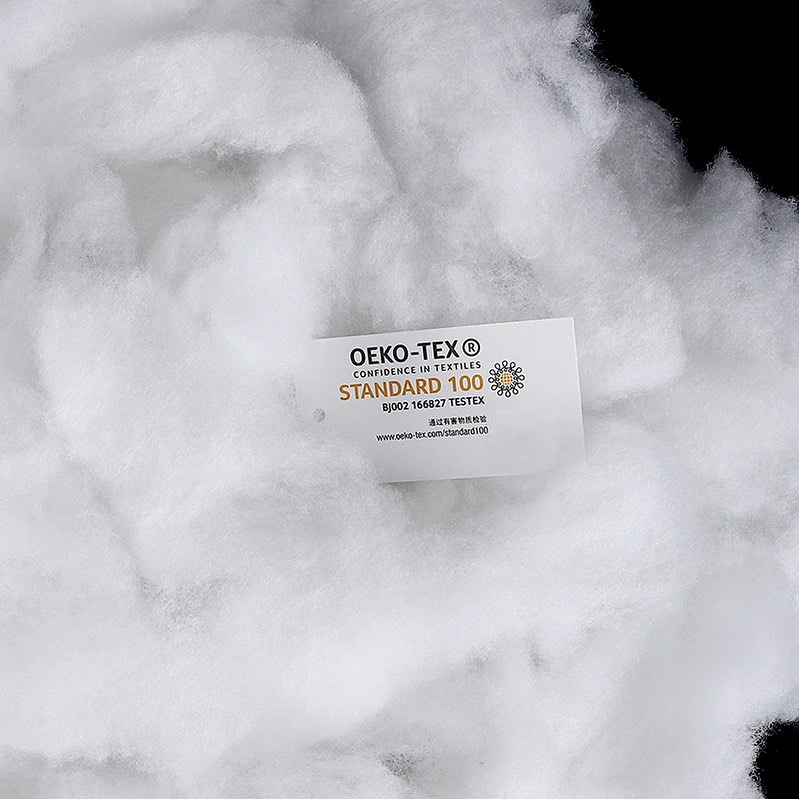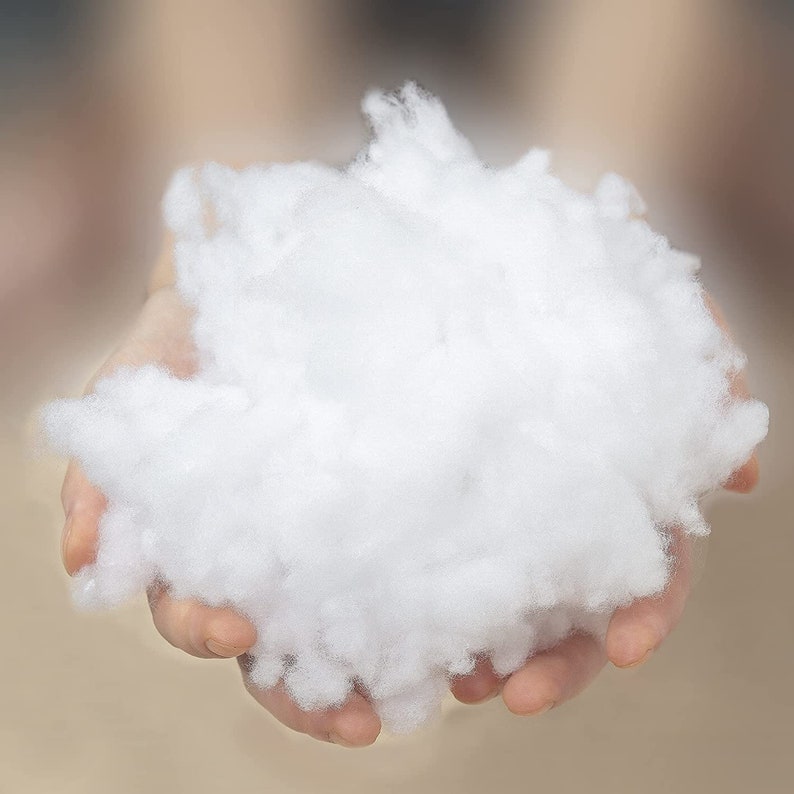Polyester Staple Fiber Production Line Capacity 50000 Tons
- This complete set of equipment takes polyester chip and bottle flakes and pet lumps as raw material,
- Adopt the melting spinning technology and the technology of variable-frequency drive after drafting, curling, cutting and packaging processing machine to produce polyester staple fiber products with high strength and good elongation.
PRODUCT DETAIL
Where to buy Polyester Staple Fiber Production Line?
VNPOLYFIBER has been providing Polyester Staple Fiber production line as our core business line, we have the capability to supply you the required production line together with professional technology and after sales service. Besides, we offer various spare parts related to PSF production line at customer requirement.
In response to the trend of larger capacity polyester staple fiber drafting equipment, VNPOLYFIBER and its partners has dedicated a team of scientific and technological engineers to the research and development of new products. As a result, the brand new 50,000-ton polyester staple fiber crimping machine has been successfully developed. This machine has been utilized at Sinopec Luoyang Petrochemical General Plant and Sinopec Yizheng Chemical Fiber for over six months, receiving praise for its smooth operation, advanced performance, low noise, and high precision.
Our manufacturing partner, associated with China Textile Machinery Group Corporation, specializes in manufacturing chemical fiber drafting equipment such as crimping, cutting, and baling machines. They have strategically aligned themselves with the group’s philosophy of “synergy and innovation” and competitive strategy of “low cost, differentiation, and rapid response.” Through strategic decision-making and a focus on high-tech product development, we aim to stay ahead of the curve in the international and domestic market for polyester staple fiber drafting equipment.
The introduction of this 50,000-ton crimping machine signifies a new milestone for us in the realm of large-capacity polyester staple fiber post-processing equipment. This machine not only embodies cutting-edge technology but also stands out for its intelligent design and precision, reflecting our commitment to staying current with industry advancements.
This 50,000-ton crimping machine is constructed with high-grade stainless steel components, boasting exceptional surface processing precision. It comprises of various parts including crimping box, frame pneumatic, pressing arm transmission, crimping seat, rotary joint, and pressing components. Key technical specifications include a tow fineness of 550-600Ktex, crimping roll width of 550-600mm, crimping roll diameter of 303mm, mechanical speed of 250-300m/min, and total weight of 9000Kg.
The crimping machine is considered a pinnacle product in the chemical fiber spinning industry due to its advanced technology and precision, playing a crucial role in the drafting process. The successful development of this 50,000-ton crimping machine further solidifies our commitment to innovation and excellence in the field.
Source of raw material: Bottle, pop corn material, lump, recycled packing belt, PET beer bottle.
Pop corn material comes from virgin filament, recycled filament, fabric, film or powder material.
Final product: 1.5D-30D solid fiber, 5D-15D hollow fiber. According to customer requirement, we also provide solution for PSF line to provide colored fiber, high tenacity fiber etc.
The auto complete production line is for 50000 Tons annually polyester staple fiber.
This entire collection of machinery uses polyester chips and bottle flakes as the raw material to produce hollow and solid polyester staples fiber. It employs the technique of melting spinning and incorporates variable-frequency drive technology. The process involves drafting, curling, cutting, and packaging machines to create polyester staple fiber products that possess excellent strength and minimal elongation.
The line uses polyester waste as raw material to produce polyester fiber by means of melting, filtering, metering melt as well as spinning, quenching, oiling, drawing-off, feeding and filling technology.
The line consists of main production line, auxiliary production units and general facilities, including:
1. Main production line for spinning
It mainly consists of extruder, filter, spinning insulation beam, thermal agent circulation system, metering pump, pump driving system, spin pack, blasting device, winding machine and yarn can traverse system.
2 Auxiliary production units, including
Dissembling, cleaning, assembling, preheating of spin pack; testing of spinneret and preparation of sand; preparation of finish oil; air conditioning and ventilation; physical and chemical detection.
3 General facilities, including
Electric substation, water supply, compressed air system and other comprehensive facilities.
Process flow of polyester staple fiber
Fore spinning Line:
Vacuum Dryer -> Hopper -> Screw Extruder -> Filter -> Spin Beam (Meter Pump System, Spin Pack, Spinneret) -> Quenching Unit -> Interflow Duct -> Draw-off Wall -> Capstan Roller -> Sunflower Gearing unit -> fiber can traverse system
Pre-spinning Line:
Vacuum Drying Machine -> Storage Container -> Screw Extrusion Machine -> Sieve -> Spinning Apparatus (Metered Pump System, Spinning Pack, Spinneret) -> Cooling Unit -> Connecting Passage -> Withdrawal Wall -> Roller System -> Gear System for fiber movement.
Post spinning Line:
According to the spinning process technology, the products are divided into solid recycled polyester staple fiber and hollow recycled polyester staple fiber.
Among them, solid recycled polyester staple fiber is divided into the following four categories:
- Cotton type: The linear density is 1.5-2.1dtex. It is divided into two types: high-tenacity cotton type and normal cotton type. High-tenacity cotton type varies according to its application.
- Medium length type: line density is 2.2-3.2dtex.
- Wool type: divided into fine denier wool type and high denier wool type. The density of fine denier wool fiber is 3.3-6.0dtex. The higher denier fiber density is 6.1-27.78dtex.
- Polyester staple fiber for filling: linear density is 3.33dtex-27.28 dtex.
Hollow recycled polyester staple fiber is divided into two dimensional hollow polyester staple fiber and three dimensional hollow polyester staple fiber.
1.1 Two-Dimensional Hollow Fiber Production Line:
Starting from the can creel, the inlet thread guide leads to the tow guide stand. Next, the fibers go through the dipping bath and then the first draw stand. They continue through the draw bath and the second draw stand. The fibers then reach the draw steam chest and move on to the third draw stand. After that, they pass through the tow stacker and enter the crimper steam box. The fibers are then processed by the crimper and conveyed by the tow conveyer. Next, they go through the relaxer and the tow tension stand before reaching the cutter. Finally, they are transported by the chain plate conveyor and pressed into bales by the baling press.Can Creel -> Inlet Thread Guide -> Tow Guide Stand -> Dipping Bath -> 1st Draw Stand -> Draw Bath -> 2nd Draw Stand -> Draw Steam Chest -> 3rd Draw Stand -> Tow Stacker -> Crimper Steam Box -> Crimper -> Tow Conveyer -> Relaxer -> Tow Tension Stand -> Cutter -> Chain Plate Conveyor -> Baling Press
1.2 Three-Dimensional Hollow Fiber Production Line:
Similar to the two-dimensional line, the process starts with the can creel and the inlet thread guide. The fibers then pass through the tow guide stand and the dipping bath. Next, they go through the first draw stand and the draw bath, followed by the second draw stand. The fibers then reach the draw steam chest and move on to the third draw stand. Instead of a tow stacker, a tension control device is used in this line. The fibers then enter the crimper steam box and are processed by the crimper. After that, they are sprayed with silicon oil by the silicon oil sprayer. Next, the fibers go through the tow tension stand and are cut by the cutter. They then pass through the fiber spreader and the fiber leveler before reaching the relaxer. The fibers are then transported by the chain plate conveying system and pressed into bales by the baling press.
Can Creel -> Inlet Thread Guide -> Tow Guide Stand -> Dipping Bath -> 1st Draw Stand -> Draw Bath -> 2nd Draw Stand -> Draw Steam Chest -> 3rd Draw Stand -> Tension Control Device -> Tow Stacker -> Crimper Steam Box -> Crimper -> Silicon Oil Sprayer -> Tow Tension Stand -> Cutter -> Fiber Spreader -> Fiber Leveler -> Relaxer -> Chain Plate Conveying system -> Baling Press
2. Spinning section:
2-1 Main production unit:
It is mainly composed of drying system, screw extruder, filter, spinning insulation box, heat medium circulation system, metering pump, metering pump transmission device, spinning pack, quenching system, take-up, haul-off unit, traction feeding and traverse system for fiber cans and so on.
2-2 Design basis: Basic design of spinning production line
- Annual production capacity: 6000T
- Finished fiber size: 1.67 Dtex
- Spinning bits: 8 bits
- Spinning pitch: 650mm
- Spinneret specifications: φ 328mm
- Metering pump specifications: 70cc/ R
- Spinning speed
- Mechanical speed: 500~1500m/min
- Process speed: 500~1350m/min
- Specification of fiber cans: 1000×1500mm
Processing section
Precursor fiber tow → Creel & upper & lower guide frames → Oil immersion bath → 1st draw stand → bath draw chest → 2nd draw stand → steam draw chest → 3rd draw stand → stacker → tension frame →steam pre-heater → crimper → spreader → tensionless tow dryer → draw-off tension stand → cutter → baler for stapled fiber.
Recycled bottle flake get dryed first, and goes into screw extruder for melt, then the melt will be purified by filter. Melt get distributed by meter pump and goes into spin beam for the second filtration and then become fiber tow after spinneret and cooling system.
Key Features:
- The equipment has a straightforward and linear design, making it effortless to install and maintain.
- Utilizes top-quality components from renowned global brands for pneumatic, electric, and operational parts.
- Employs a high-pressure double crank mechanism to efficiently control the opening and closing of the die.
- Operates with advanced automation and intelligence, ensuring a clean and pollution-free process.
- Incorporates a linker that seamlessly connects with the air conveyor, enabling direct integration with the filling machine.
Our Service:
- Quick delivery time.
- Round-the-clock online service.
- Guarantee: Key components covered for 1 year.
- Provide lifetime access to reasonably priced parts.
- Extend technical assistance and workshop layout guidance to buyers.
- Customize the layout as per buyer’s requirements.
Packing & Delivery
- Packaging: Export packaging that meets standard requirements.
- Harbor: Any harbor located in China.
- Delivery Time: Within 30 to 40 business days after receiving the initial payment.
Technical Parameter
| Place of Origin: | China |
| Brand Name: | VNPOLYFIBER |
| Minimum Order Quantity: | 1 unit |
| Price: | USD |
| Packaging Details: | export standard |
| Delivery Time: | 40 days |
| Payment Terms: | L/C, T/T, D/P |
| Supply Ability: | 10 sets per month |
| Condition: | New | Main Drive: | Frequency Control Of Motor Speed |
| Raw Material: | Virgin PP PE/RECYCLE | Automatic Grade: | Automatic |
| Screw Design: | Single-screw | Warranty: | 1 Year |
| After-sales Service: | Engineers Available To Service Overseas Market | Electrical Control: | PLC Controlled |
Video
FAQ
1. What do you offer?
We produce recycled hollow conjugated siliconized and non-siliconized polyester staple fiber mainly, we can make hollow fiber (HS/ HD) and virgin polyester staple fiber HCS as well.
2. What is it used for?
Our fiber is widely used in filling, non-woven fabric
3. Are you a factory or a trading company?
We are a factory specialized in polyester staple fiber for many years but now we also have our own professional trading company. We will source many types of textile products such as yarn, PP fibers from others to supply our own customers as well. We also provide our own customers with other related products such as: Foam, Pillows, Cushions, Toys, Down/ Feather,…
4. Where is your factory location?
Our factory locates in the north and the south of Vietnam. You can visit us from Ho Chi Minh City and Hanoi City, Vietnam. You could contact our salesman to fetch you if visiting.
5. Can you accept free sample?
Yes, the hand sample is free when not exceed 1 kilograms. Upon price confirmation, we will provide a sample within 2-3 days; the freight cost will be charged to client.
6. Can you provide ODM service?
Yes, we work on ODM orders. Which means size, material, quantity, design, packing solution, etc, will depend on your requests, and your logo will be customized on our products.
7. How about your quality? What’s the minimum order Quantity (MOQ)?
Please try a trial order, you will know it. The MOQ is 23,000 Kilograms/order, but the price will be lower if you order bulk volume.
8. Can I mix different items in one order?
Sure, you can mix any products we can provide.
9. How can you guarantee the product quality?
We have experienced QC team. We control not only productive process but also raw material. In addition, we have different kinds of testing instrument to help us guarantee the product quality.
10. What’s the payment terms?
L/C at sight, 30% TT in advance are mostly accepted; other terms shall be negotiable by both sides
For more information, please feel free to contact :
Mr. Tony Tan
Mobile number: +84 90 466 5251 (Whatsapp/Wechat/Viber/Signal)

